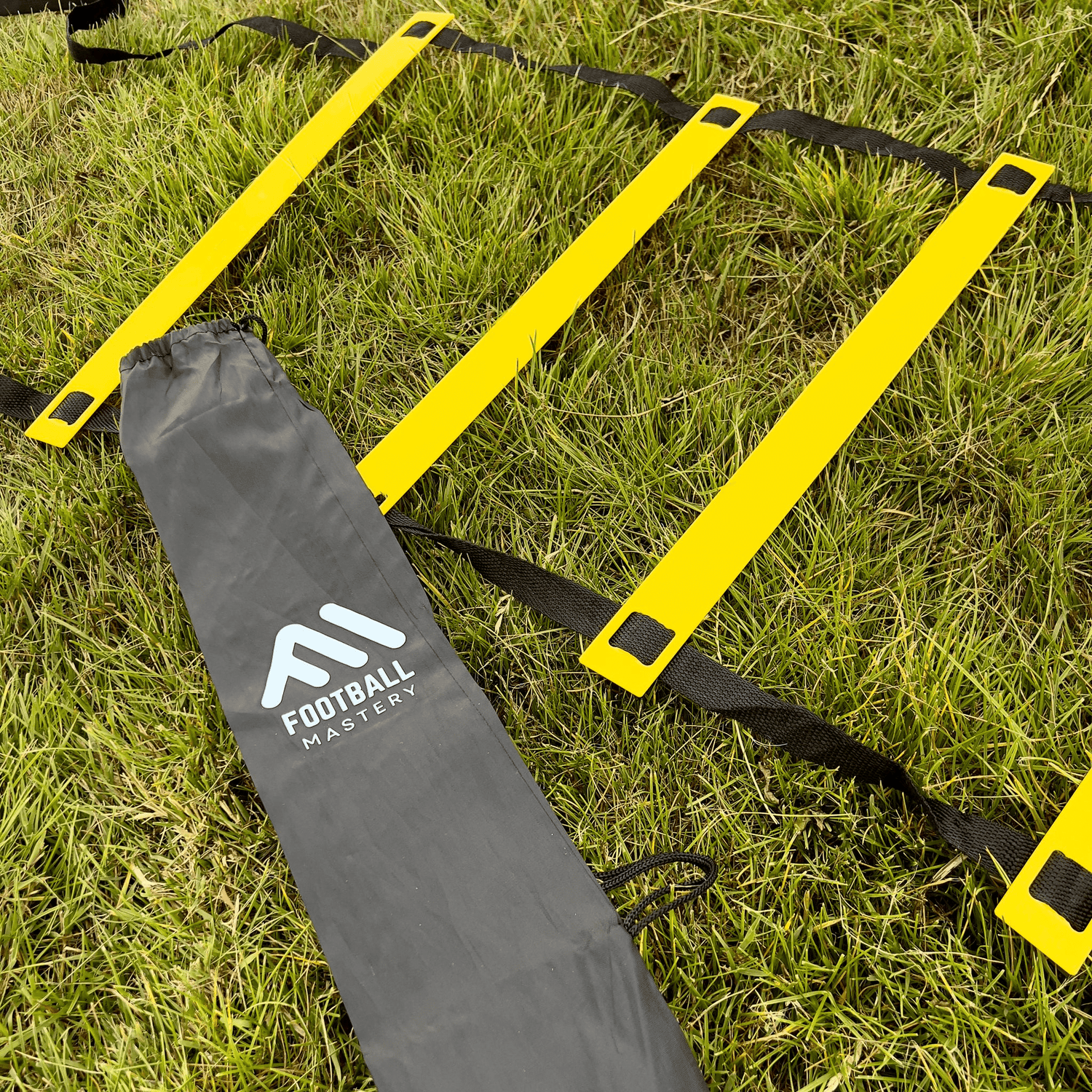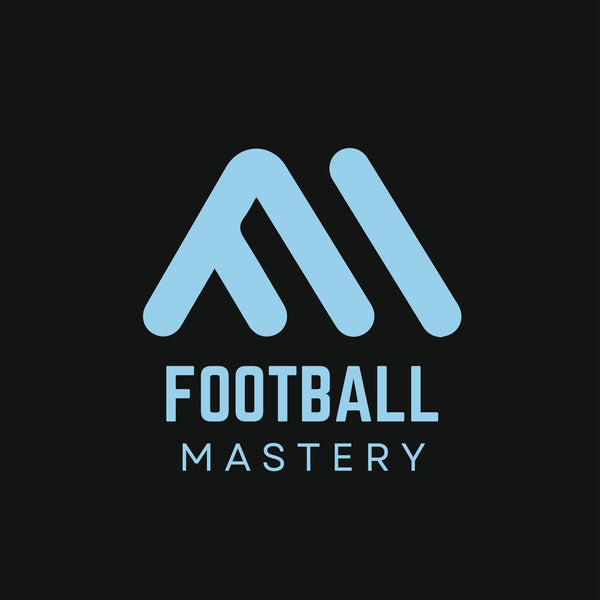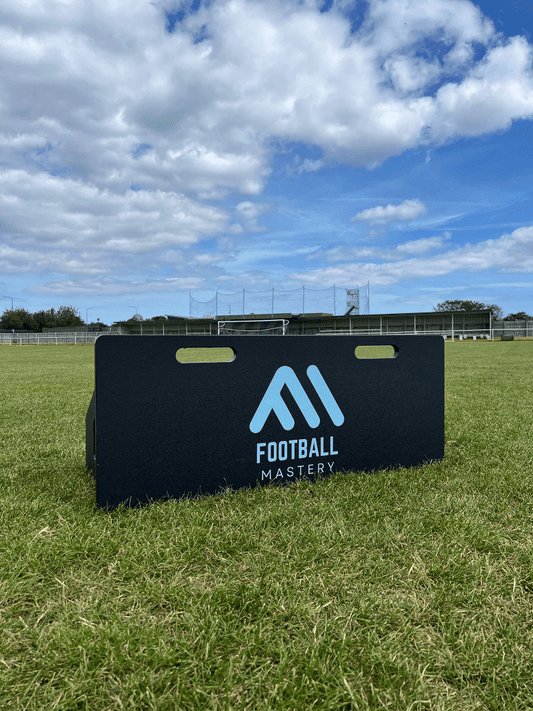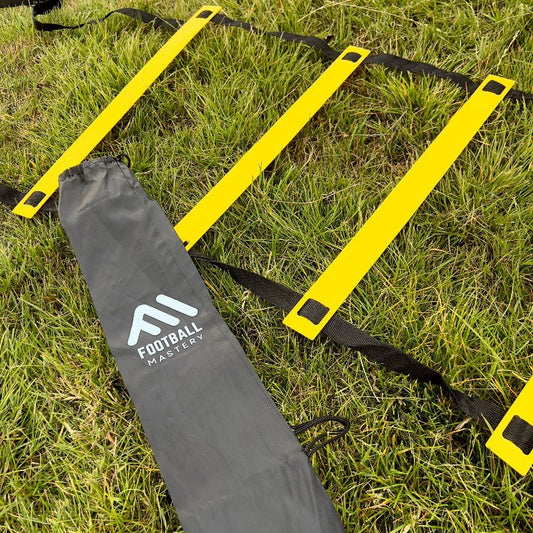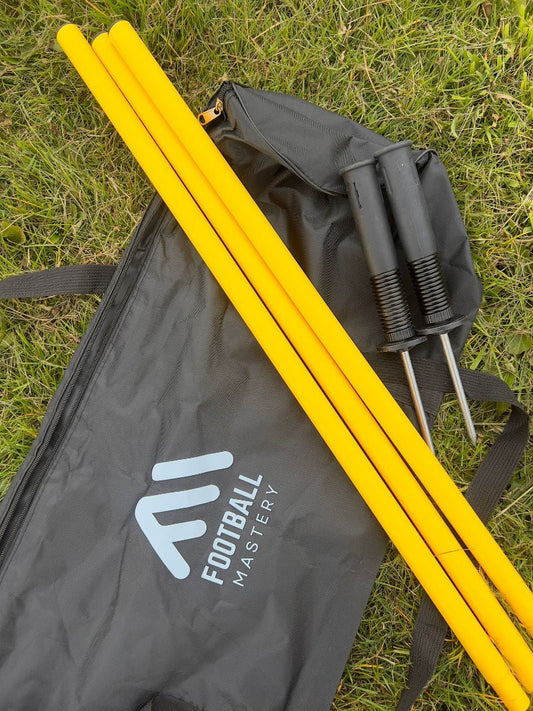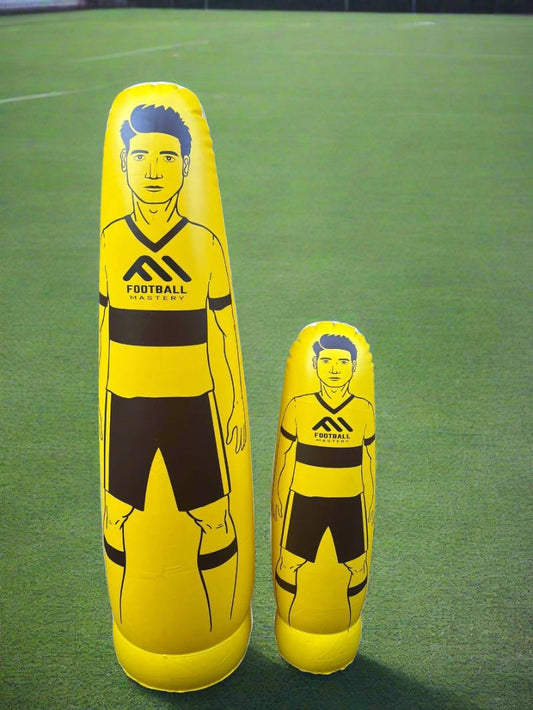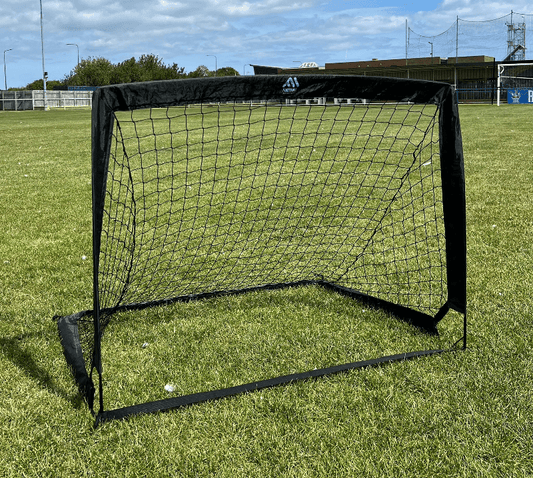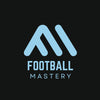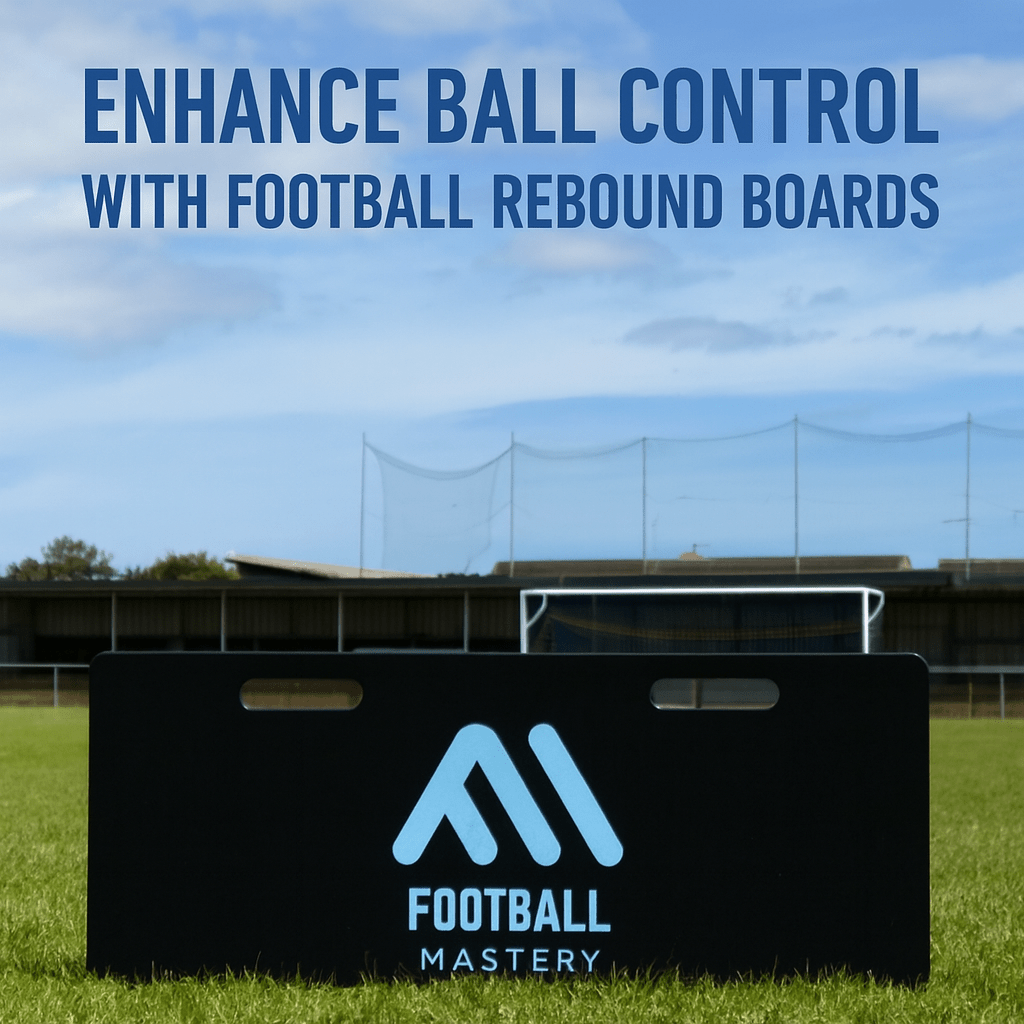
Enhance Ball Control with Football Rebound Boards
Share
If you're looking to sharpen your ball control and bring more finesse to your game, football rebound boards are one of the most effective tools available today. In this article, you’ll learn how rebounders help build your first touch, develop passing accuracy, and simulate high-pressure match scenarios—all through dynamic, solo-friendly drills that can be practised indoors or outdoors. We’ll break down the types of rebounders, key drills for technical mastery, and how you can set up elite-level training from the comfort of your garden or local pitch. Along the way, we’ll point you to some of the most relevant football training aids and gear bundles to take your sessions to the next level.
Why Ball Control is Still the Most Valuable Skill in Football
No matter your level or position, ball control remains the cornerstone of effective footballing performance. From centre-backs breaking lines under pressure to wingers executing a deadly first touch on the break, the ability to control and manipulate the ball with consistency separates great players from the rest.
Football today is quicker, tighter, and more tactical. Players must master touch control, anticipate ball trajectories, and make rapid decisions. Repetition, pressure simulation, and spatial training are now essential—not just playing five-a-side.
That’s where a football rebounder becomes invaluable.
The Science Behind Repetition: Train Like the Pros
Rebound boards provide players of all levels with a training partner that never tires. Whether you’re in an elite academy or training solo in your backyard, the right drills can create muscle memory, improve reaction time, and refine key elements of your game.
“If you want to get better, the ball needs to come back at you quickly, from different angles, with pace. That’s where a good rebound board earns its place.”
A rebound net or board allows you to create realistic, game-like repetitions where:
-
The ball returns with unpredictable angles.
-
You can simulate high-speed situations.
-
You build timing, first-touch control, and spatial awareness without needing a partner.
Training Benefits of Rebound Boards
Here’s what you gain by incorporating a rebounder into your routine:
-
Consistent repetition for technical drills
-
Improved first touch and close control
-
Sharpened passing accuracy and quick release
-
Boosted agility, reflexes, and reaction enhancement
-
The opportunity to simulate real-game scenarios
-
Independence from relying on teammates for sessions
Whether you're looking for independent practice or want to supplement your group training, a rebounder delivers measurable results with just a few minutes a day.
Explore our full collection of rebound boards to find the right fit for your training goals.
Choose the Right Rebound Board for You
Not all rebounders are built equally. Based on your needs, you might choose from:
-
Adjustable rebounders for varying angles and drill types
-
Dual-sided boards for continuous training flow
-
Handheld rebounders for goalkeeping or small-space drills
-
Angled rebound boards for unpredictable bounce simulation
If you’re just starting or want an all-in-one solution, we recommend checking out our football mastery bundles, which combine rebounders with other essential training gear.
Setup Tips for Maximum Training Impact
To maximise effectiveness, a bit of structure goes a long way. Here's how to set up for high-quality sessions:
-
Use cones or marker zones to define space and targets
-
Incorporate an agility ladder to blend control with footwork
-
Create drills that require decision making, not just repetition
-
Film your sessions to review body positioning and touch control
-
Vary distances and power to keep things unpredictable
And yes, all of this is achievable with a home training setup—no need for a full pitch or academy facilities.
Looking for a great all-rounder? Try our Football Mastery Rebound Board — a fan favourite for its portability and dynamic responsiveness.
Core Drill: One-Touch Passing Routine
A foundational drill for players of all positions is the one-touch passing routine. This improves timing, first-touch quality, and reinforces clean striking technique.
Setup:
-
Stand 3-5m from the rebounder.
-
Use cones to create a channel zone.
-
Pass with your right foot, receive with your left.
-
Adjust to two-touch control to refine trapping technique.
Repeat 15 reps on each side. Increase intensity by adding lateral movement between passes.
For more training inspiration, check out the detailed tips on our home page and keep your sessions fresh.
Shooting Drills: Train for Goals, Not Just Contact
A major mistake many players make is separating ball control from shooting technique. In reality, the best finishers are those with exceptional first touch, spatial instinct, and balance under pressure. Using a football rebounder, you can simulate live ball scenarios where you must trap, adjust, and strike in seconds.
Try this drill: Rebound to Reaction Finish
Equipment: Rebound board, cones, small target goal or net
Drill setup:
-
Pass the ball firmly into the rebounder.
-
As it returns, control it with your first touch into a shooting position.
-
Strike the ball into the target with minimal setup time.
-
Vary angles to train both feet and turning control.
This drill helps develop:
-
Controlled receptions
-
Dribbling transitions
-
Shooting off one or two touches
-
Performance under pressure
Want to build out your at-home training ground? You’ll find excellent value in our football mastery bundles, which include rebound boards, cones, and accessories designed to complement finishing practice.
Reflex Training & Ball Mastery Under Pressure
One of the more underrated benefits of a rebounder is its ability to test and sharpen your reaction time—a quality that's critical both offensively and defensively. Because the bounce from a rebound board can vary depending on angle, power, and position, you're constantly adjusting.
In many ways, rebounder training mirrors the unpredictable nature of real match play—something static drills just can’t replicate.
Drill: Quick Rebound Reaction Drill
-
Stand 3 metres from the rebounder.
-
Use one-touch returns with your dominant foot.
-
After every 5 passes, switch to your non-dominant foot.
-
Add lateral movement (sidesteps or shuffles) between each pass.
-
Try to increase speed while maintaining accuracy.
You’re not only improving footwork and ball control, but also:
-
Visual tracking
-
Impromptu decision making
-
Balance and body orientation
To bring variety to your setup, consider using a dual-sided rebounder or one with adjustable legs. Explore the full rebounder range here and upgrade your training flexibility.
Boosting Creativity with Dynamic Rebounder Routines
Great players don’t just repeat drills—they improvise. A rebound board is the ideal tool for developing creative play, particularly when combined with cones, plyometric elements, and changes in direction.
Drill: Rebounder + Creative Turn Series
-
Set up your rebounder at a diagonal angle.
-
Pass to the rebounder and receive the ball while performing a turn (e.g., Cruyff turn, outside hook).
-
After the turn, accelerate towards a cone gate or shooting target.
-
Alternate turns every few reps.
This helps develop:
-
Improvisation in tight spaces
-
Turning under pressure
-
Anticipation and reaction
-
Explosiveness after control
Creative mastery begins with repetition, but thrives on unpredictability. Don’t be afraid to experiment.
Goalkeeper-Specific: Reflex, Handling, and Game Reading
Rebound boards aren’t just for outfield players. Goalkeepers can benefit immensely from rebound save technique drills that build shot-stopping instincts, reflexes, and ball handling under pressure.
Drill: Two-Ball Rebound Save Sequence
You’ll need:
-
A rebound board
-
A partner to feed or toss balls
-
Marker cones
Execution:
-
The partner throws or kicks the ball into the rebounder.
-
Keeper reacts and dives to save.
-
Immediately after, the partner delivers a second ball to the opposite side for a quick follow-up.
This builds:
-
Explosive diving reflexes
-
Handling of unpredictable high balls
-
Cross interception reactions
-
Reading of shot angles
If you’re training solo, you can also throw balls yourself into a handheld rebounder against a wall or fence and react to their unpredictable flight path.
Looking to level up your goalkeeper kit? See if our product range includes a rebounder for sale that matches your mobility and space needs.
Realistic Match Simulation at Home
Want to bring all these drills together into a full routine? Rotate between:
-
One-touch passing for touch control
-
Creative first-touch drills for improvisation
-
Shooting drills for finishing under pressure
-
Quick rebound routines for agility
-
Reflex and save drills (if training as a keeper)
Use cones, a ladder, and the angled rebound board to create constantly changing drill setups that simulate match tempo.
Sample Weekly Rebounder Training Plan
Consistency matters more than intensity. You don’t need hours every day. Just 20–30 minutes of well-planned drills can completely transform your touch control, agility, and overall confidence on the pitch.
Here’s an example plan for solo players (adaptable for small groups or goalkeepers):
Monday – Technique Foundation
-
10 min: One-touch passing (right & left foot)
-
10 min: First-touch receptions + controlled passes
-
5 min: Cooldown / stretching
Tuesday – Reaction & Agility
-
10 min: Lateral quick reaction drills
-
5 min: Agility ladder + rebound integration
-
10 min: Plyometric movements + passing combos
Wednesday – Creative Dribbling & Turns
-
15 min: Receive from rebounder + dynamic turns
-
10 min: Cone dribble into rebound pass
Thursday – Shooting & Ball Striking
-
10 min: Rebounder control + finishing
-
10 min: Volley practice or half-turn shots
-
5 min: Review foot positioning and contact technique
Friday – Goalkeeper Day or Mixed Session
-
10 min: Rebound saves or reflex stops (GK)
-
10 min: High ball control + body positioning (outfield)
Weekend – Light Play or Match
-
Use your rebound board for fun, creative freestyle drills or warm-ups before games.
Consistent exposure to real-time feedback and variable ball movement develops not just technique—but resilience under pressure.
Common Mistakes When Using Rebound Boards (And How to Avoid Them)
Avoid falling into these common traps that can limit your progress:
-
Repeating easy drills: Progress comes when you challenge yourself. Increase pace, vary angles, and switch feet often.
-
Standing still: Football isn’t played in a static stance. Incorporate footwork, movement, and body positioning into every drill.
-
Ignoring the weaker foot: Balance your repetitions to build equal control and distribution skills on both sides.
-
Over-focusing on technique, neglecting vision: Use markers, gates or visual cues to simulate game scanning and decision-making.
-
Using a poor-quality rebounder: A flimsy or unstable board won’t return consistent bounces. Get one that’s built for performance and durability.
Choosing the Right Rebounder: A Quick Buyer’s Guide
Your environment, skill level, and goals will help determine the best rebound board for you. Here's a breakdown:
| Goal | Ideal Product Features |
|---|---|
| Backyard training | Compact, portable rebound board |
| Advanced first touch | Angled board with variable return speed |
| Goalkeeper reflex work | Dual-sided or handheld rebounder |
| Group drills or academies | Heavy-duty, durable boards for repeated use |
| Young players | Lightweight, easy-to-set-up gear |
For most players, the Football Mastery Rebound Board strikes the perfect balance between portability and performance. Built for real-game speed, it offers crisp rebounds and withstands repeated impact.
Or, if you're just getting started and want a full setup that includes cones, balls, and training markers, browse our Football Mastery Bundles for excellent all-in-one options.
Why Rebound Training Works — Final Thoughts
In a world full of over-complicated training gadgets, the rebound board keeps things simple—and brutally effective. It brings the player back to the essentials:
-
React.
-
Control.
-
Pass.
-
Adapt.
Whether you're fine-tuning your first touch, drilling reaction speed, or working on creative improvisation, a rebound board delivers real-game simulation on demand.
As coaches often say: “If you can’t control the ball, you can’t control the game.”
For players serious about developing technical mastery—whether training for trials, academy improvement, or just the weekend league—investing in a high-quality rebound board can be game-changing.
Ready to Upgrade Your Touch?
Visit FootballMastery.co.uk and explore our full line of football training aids, rebound boards, and purpose-built gear designed by players, for players.
Your best version on the ball starts with one decision—train smarter.
❓ Frequently Asked Questions (FAQ)
1. What age group can benefit from using a football rebound board?
Rebound boards are suitable for all age groups, from young children learning the basics of passing and control, to senior-level players honing precision and speed under pressure. The key is selecting the right rebounder size and angle to match the player’s skill level and physical capability.
2. How far should I stand from the rebound board during drills?
The ideal distance depends on the intensity and purpose of the drill. For first-touch and close control work, 2–4 metres is sufficient. For long-passing drills or reaction-based shooting exercises, you may stand 6–10 metres or more away. Adjust the distance based on the speed of the return and your training goals.
3. Can rebound boards be used indoors as well as outdoors?
Yes, many rebound boards are designed for indoor/outdoor compatibility. However, make sure the surface (like wooden floors or sports halls) is suitable for rebounder legs or frames, and consider using a soft ball indoors to minimise noise or damage. Always check the product’s base for non-slip features if training indoors.
4. Do rebound boards help with weak foot development?
Absolutely. Because rebounders return the ball consistently, they are perfect for isolating weak foot control, passing, and shooting. Create drill routines specifically for your non-dominant foot to build confidence and symmetry in your play.
5. Is a rebound board better than a training partner?
While training with a teammate has its benefits, a rebound board offers uninterrupted, repetitive practice, ideal for technical improvement. It’s especially valuable for solo sessions, where the player can focus entirely on skill development without external distractions.
6. Can rebounders be used to improve aerial control (chest, thigh)?
Yes. By adjusting the angle of the rebounder, you can simulate lofted returns that help train chest control, thigh cushioning, and volley technique. These drills improve timing and body coordination in aerial situations, often overlooked in static drills.
7. What’s the best surface to use a rebound board on?
Rebound boards work well on grass, artificial turf, and hard courts. For use on uneven surfaces, opt for models with stable, adjustable legs. On softer ground, ensure the board is anchored securely to avoid shifting during impact.
8. How do I maintain or clean my rebound board?
Maintenance is minimal but important. After outdoor use, wipe down the board to remove dirt and moisture, especially on metal components. Store it in a dry, covered area to prolong life. Check for loose bolts or wear over time to maintain optimal bounce quality.
9. How long before I see results in my ball control?
With consistent training, noticeable improvements in first touch, passing accuracy, and reaction time can be seen in 2–4 weeks. Faster progress often comes from short, focused sessions (20–30 minutes, 3–5 times a week) rather than long, irregular training.
10. Can I use a football rebounder as part of a full fitness session?
Yes. Rebound boards can be integrated into fitness circuits by combining them with agility ladders, cones, and plyometric drills. This helps improve not just control, but also conditioning, foot speed, and endurance—crucial for match fitness.
